|
TREC LICENSE # 0303291

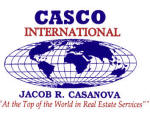
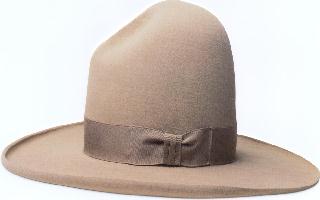




 CASCO CASCO
mAIN oFFICE
210-692-0990
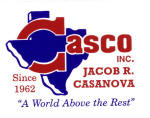


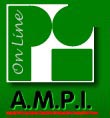
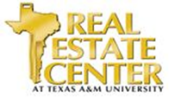

| |

•
General Information
•
The
Mexican borders are delimited by three neighbors: to the north with the United
States of America and to the south with Guatemala and Belize. The Mexican sun
born in the coast that traps 3,000 km. of the Gulf of Mexico and the Caribbean
sea and it sets in the 7,100 km. of beaches and cliffs of the Pacific ocean.
- General
Data
- Official
Name: Estados Unidos Mexicanos
- Surface:
1'972,547 km2
- Geographical
situation: Located between 14º and 32º of north latitude
- Official
language: Spanish and some native languages
- Population:
97'361,711 inhabitants (2000)
- Money: Peso
Symbol: $0.00 cents
- Measure
system: Metric system
- Weight unit:
Gram
- Predominant
religion: Catholic (there is freedom of cult)
- English
Language
- A
considerable percentage of inhabitants of the cities in Mexico speak
English,
which has become a need for professionals and entrepreneurs.
- The
proximity with USA has contributed to an intensive cultural flow:
films, series of television, music, commercial products and technical and
industrial training which is reflected in the bias of the understanding of
the language.
-
- Highways
- The toll
highways cover a net of more than 5,000 km. in Mexico and how are being
concessioned by the government to private companies. The most moderns have 6
lanes and count on with boundary, retaining barriers, reflectings, excellent
signalings and emergency telephones each 2 km.
- The tools
vary according to the distance between each tollbooth, the weight, the kind
of vehicle and the number of shafts. According to the studies of the Mexican
Concessioned Infrastructure Association, the toll quota is charged in 30% of
the highways of the Republic and the average cost is $0.46 per kilometer
traveled for trucks of two shafts.
- Upon paying
the toll quota, the conductor is insured against highway accidents in the
section that specifies the voucher.
- In all the
Mexican Republic there are 42 bases of "Angeles Verdes", these are
patrols of mechanics who give service to the motorists that need assistance
with their vehicles.
-
- Buses
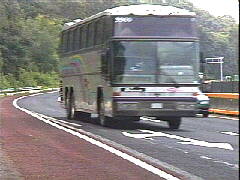
- The
principal Mexican bus lines count on executive service to the most important
cities of the country. During the last year, most of the lines have been
modernized and today count on with new units, reliables and comfortables.
- Train
stations
- The routes
cover the principal cities and industrial centers in Mexico, as well as the
border towns with USA which have connection points with the American train
stations.
- The more
important connection points are: Mexicali - Caléxico, Nogales - Tucson,
Ciudad Juarez - El Paso, Nuevo Laredo - Laredo, Matamoros - Brownsville.
- The trains
offer an attractive and assorted panorama in its XIX century museum trains,
from its train stations to the lines that cross places. It worth to mention
the rout Chihuahua - Pacífico which travels trough the Sierra Madre
Occidental going through the Gully of the Copper, which encloses large and
impressive abysses and grandioses mountains that measure more than 3,000
meters over the sea level. As this tour, and not less impressive are most of
the train routes.
-
- Aircraft
- Until 1985,
the aviation in Mexico depended mainly on its international routes. From
that year, the development of the regional aviation has permitted the
creation of new lines with new routes to more cities of Mexico, with a more
accessible cost.
- Currently,
35 international air lines arrive at the Mexican airports. The two principal
Mexican air lines count on with 7 air routes with direct international
flights from different cities and 16 direct international air routes from
Mexico City.
- There are
direct flights toward the principal American cities, and the transatlantic
service that counts on with direct flights to Paris and Madrid, from where
practically you can make connections toward all the world.
-
- Maritime
lines and ports
- By this
means, 30.6% of the national load and 80% of the load destined
to the foreign trade, is transported.
- Mexico has
an infrastructure for height and cabotage vessels. There are 85 ports, which
add 74.7 km of docks. The principal Mexican ports are: Tampico, Veracruz,
Tuxpan and Coatzacoalcos in the Gulf of Mexico, and Ensenada, Topolobampo,
Mazatlan, Mansanillo, Puerto Vallarta, Lázaro Cardenas, Acapulco and Salina
Cruz in the Pacific ocean.
- The country
counts also with ferryboat service in both coastal with a fleet of 32 ships.
-
- Radio
- The
radio is an old tradition in Mexico that has not decayed with the advent of
the television. There is a great variety of stations in A.M. and F.M. with
national nets, both bands have a great hearing and they are an accessible
means of promotion and social communication countrywide.
-
- Press
- The press
freedom and the news avidity on part of the Mexican reader have
made of the journalism one of most important media.
- About 30
good quality newspapers circulate countrywide. In addition to a
big amount of magazines and specialized newspapers. In the cities you will
be able to find newspapers as the "News" and publications as
"Time" or "Newsweek", as well as practically any
international spectacles, modes, social, sports, mechanics, science and
information publications.
-
- Telephone
- The regular
telephony service in Mexico is available in 29,000 towns, and 18,000
localities count on with rural telephony service.
- Since 1990
the international communication from person to person have been quickened
thanks to the satellites Morelos and Solidaridad.
- The digital
net covers 14 cities and as to the cellular telephony, Mexico occupies
the eight place in the world, covering 80 cities with more than 250,000
subscribers.
-
- Fax
- The fax use
is common in Mexico, a great number of businesses count on with this tool
and it is common to find private facsimiles in houses of professionals. The
public fax service is provided in businesses and trades, mainly in
stationary shops.
-
- Hotels
- In all the
important cities and in the tourist zones in Mexico, you will be able to
find hotels of the principal chains as Westin, Holiday Inn, Radison and
Sheraton,
between others. In towns and smaller localities you will always be able to
find
Hotels, Inns, Motels and Lodgings which offer good service.
- The high
seasons are from March 25 to April 10, from July 1st to the
August 14
and from December 15 to January 3. In these dates, as well as in the
national
holiday days, it is indispensable to book with a reasonable period of time
to receive the confirmation from the hotel by write.
- Other viable
possibility of loading during a long period of time is to rent a Suite or
a furnished department. In the cities the rent can be high, according to the
zone in which it is located, however in the towns, the prices are more
accessible. There are publications where you can find the information of
these services as well as real-estate companies and the embassies that tend
to have useful information for their citizens.
-
- Uses
and customs -
- Schedule of banks,
trades and offices
- In Mexico
the banks open from Monday to Friday, from 9 AM to 3 PM; some are open until
5:30 PM, and on Saturdays from 10 AM to 1:30 PM, in several malls.
- There are
automatic cashiers that operate 24 hours a day, seven days a week, in some,
is offered the VISA or MASTERCARD service used by most of the international
credit cards. It is frequent to find this service in the cities of Mexico.
- Generally,
in Mexico City the schedule of the trades is from 10 AM to 8 PM, from Monday
to Saturday or from Tuesday to Sunday. In the suburbs some shops closed
until 9 PM or 10 PM. In the rest of the country the trades open from Monday
to Saturday, from 8 AM to 2 PM and from 4 PM to 8 PM, on Sundays they will
open half a day.
-
- Nutritional
habits
- The Mexican
people eats 3 daily foods: Breakfast, Lunch and Dinner.
The Breakfast generally is taken between 6 AM and 8 AM, Lunch between 2 PM
and 4 PM and Dinner between 8 PM and 10 PM. The peasants and workers,
between others, take a light luncheon between 12 and 1 PM since they tend to
be awake extremely early.
-
- Restaurants
and Bars
- Mexico
counts on with all kind of options to eat an to drink. From luxury
restaurants that serve international dishes or Mexican, Japanese, Cantonese,
Italian, German, French, Argentine, Greek or Arabic food, etc., to chains of
fast food restaurants
from the most famous franchises of the world.
- Also
there are plenty of inns an lunchrooms of Mexican typical food. In all the
country you
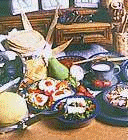 can find all-inclusive menus called "comida corrida" which
consists
can find all-inclusive menus called "comida corrida" which
consists
of a selection of soup, rice or salad and a main course to choose under a
fixed cost, normally very economic. There are vegetarian and kosher food
restaurants as well as macrobiotics restaurants that are specialized in
natural and Hindu food.
In general, a foreign visitor can continue with his normal diet.
- The
restaurants and bars on the principal cities are cosmopolitan. The majority
give service in schedules wide, normally the restaurants open from 8 AM to
12 PM for foods and until 2 AM for drinks.
- By law, the
restaurants and bars are obligated to offer a not SMOKING zone. Some years
ago, such zones were quite small and only were there to comply with the
imposed regulation, today the Not Smoking areas have grown considerably.
-
- Tips
- In the
restaurants, as opposed to other countries, the service isn't charged in the
account. If the service was of excellent quality the tip is 15% of the
consumption, if the service was just good, the usual is to leave a tip of
10% of the consumption.
- The porters,
doorman, waiters, gas stations, employees, vigilants and other workers, wait
a tip for their services, since their wages are very low and many times, it
represents their only income. The exception are the taxi drivers who receive
a tip only if they have made an extra service.
-
- Electrical
Current
- In Mexico
you will find an electrical current of 110 Volts, 60 cycles AC.
- The entry of
the plugs are two flat thin plates without polarization, the hotels,
offices buildings, houses and modern establishments count on with plugs of
flat polarized and landed thin plates.
-
- Customs
in the behavior
- Mexico is a
traditionalistic country, where the hierarchies between social positions,
age, sex and cultural level are observed. The professionals are called by
their academic degree:Doctor, Lawyer, Engineer, Architect, etc. the painters
and writers are called Master, the youth women are called "Miss"
and the married or mature "Mrs."; to the persons of age as well as
to those that have gained the respect of the community, its place before
their first name "Lady" if it is woman or
"Sir" if it is man.
- It is
appreciated the happiness, the spontaneity and the natural education, the
knowledge and the work capacity in a person are admired.
-
- Religion
- The
prevailing religion in Mexico is the Catholic-Christian. In Mexico is
venerated the Virgin Maria of Guadalupe, Christ and the Saints. A great
percentage of the population attends mass on Sundays. There is a great
variety of creeds related to the Catholic Church, its importance varies from
region to region. There are temples of all types along the territory, mainly
in the capital and principal cities. It is practiced the Protestantism, the
Judaism and all the existing religions. Normally, do not have religious
prejudices.
-
- Days
off in accordance to the law
- In Mexico
during the following dates, the offices, banks and factories do not work, as
well as some trades. The restaurants and most of the shops stay opened
January the 1st; February 5; March 21 and 31; May the 1st
and 5; September 15 and 16; October 12; November the 1st, 2, 20;
December 12 and 25.
- Emergency
services
- The Mexican
Red Cross and the rescue organizations provide emergency services
to who need them. In nearly all the towns there are Hospitals and Clinics of
the Mexican Institute of the Social Security (IMSS), and of the Social
Security Institute to the Service of the Workers of the State (ISSSTE),
which can attend any person in case of emergency, but normally they attend
only to its assured.
- The
Hospitals of the Secretaria de Salud (S.S.A.), and Departamento del Distrito
Federal (D.D.F.), attend for free everybody who need it.
- In Mexico
there are a lot of clinics and particular physicians. The embassies and
consulates handle directories with these services and they can recommend to
their citizen, the attention they need. There are various Mexican companies
that offer
air ambulance services and of mobile units of intense therapy.
-
- Health
recommendations
- It should be
considered that Mexico presents aspects that should be taken with
consideration with respect to the altitude, the weather and the nutritional
habits.
For good adjustment to the height is needed a short period of time of
adjustment, avoid excesses and try to have a light diet during the firsts
days. It is recommended, as in any part of the world, to drink bottled water
and not to abuse of the typical
food of the regions.
-
- Drinking
water
- In Mexico
there are drinking water services, in which the water is purified through
electrical systems. In every town you will be able to find purified water
bottled.
Also, you will be able to find purified water bottled as Evian, Electropura
and Cosmopura between other brands. To purify the faucet water, is
recommended
to boil it during twenty minutes.
-
- Diseases
- Currently it
does not exist a epidemic disease in Mexico.
- In the
cities the risks of contracting diseases as Cholera, Typhoid, Malaria,
Dengue fever or Hepatitis are minimal, however the vaccines for the trip are
recommended specially if they are toward jungles or marginated zones of the
country. The Health Institutions, offer this service for free.
- Also, it is
prudent to investigate the peculiarities of each region that you want
to visit, to take the necessary cautions.
- In Mexico,
as in all the world, the problem of the Acquired Immunity Deficiency
Syndrome (AIDS), is present. There are governmental as well as civil
organizations, that offer support and guidance as well as basic medical
assistance to persons that suffer from this disease.
-
- Culture
and entertainment
- In the
principal cities of Mexico you will always find entertainment's. Besides to
the numerous tourist attractions, the country counts on with any number of
options of culture and entertainment as museums, galleries, cultural
centers, theaters, cinemas, concert halls, amusement parks, nightclubs,
discos, etc.
-
- Museums
and Galleries
- The museums
are inexpensive countrywide, with some exceptions. In Mexico there are
museums with temporary and permanent exhibitions as the better of the world.
In Mexico City the museums with more prestigious are the Anthropology and
History, Rufino Tamayo, Modem Art, the Interventions, the Mexico City, Diego
Rivera, Frida Khalo, and Contemporary Art museums between others.
- An other way
to appreciate the art is visiting the expositions of the galleries of the
country. Mexico conserves a very important artistic tradition, the galleries
concentration in the Mexico City can be appreciated in the "Zona
Rosa" or in "Polanco, Coyoacan and San Angel".
-
- Cultural
Centers
- The Palacio
de Bellas Artes without doubt is the most prestigious Cultural Center
of the country. Painting and sculpture expositions, opera representations,
theater
and ballet, concerts, contemporary and folklore dance; all under the same
building. Similar in its capacities to offer art and entertainment is the
Theater Degollado
in Guadalajara.
- The Claustro
de Sor Juana is a cultural space in a convent. This center has a great
tradition as one of the most beautiful cultural frameworks in Mexico City.
- In most of
the political delegations of Mexico City, there are Cultural Houses where
are offered expositions, theater, plays, concerts and dances. Almost always
the events are free and of good quality. In the states, the Cultural Houses
are cultural bastions for the people.
- In the Sala
Nezahualcoyotl and in the Silvestre Revueltas, you will able to listen,
among other spectacles, to the Philharmonic Orchestra of Mexico City.
The Auditorio Nacional is space for all kind of concerts, with modern
equipment, comfortable facilities and excellent acoustics.
-
- Theater
- In the
principal cities of Mexico the theatrical billboard is vast. Theater is
reasonably inexpensive, its prices vary according to the play and the
theater
in which it is presented. You can find from the Broadway musical, to the
dramas
and classic tragedies as well as alternative expressions.
-
- Cinemas
- You will be
able to find international debut movies. The debut time in relationship
with USA id from one to three months depending on the film. Also, you will
be able
to find international cinematographic shows of excellent quality.
-
- Night
life
- The night
life in Mexico is very varied and active. You can attended musical
spectacles, cabarets, discos, nightclubs and bars with variety, practically
every
day of the week in all the cities. The costs are reasonable when the drinks
are national and the environment is generally safe and pleasant. It is
recommended
the foreigners be far from the "Tolerance Zones" of the cities,
where the cabarets and burdeles are.
-
- Seasons
- In Mexico
Spring begun on March 20 at 2:28 PM, Summer on June 21 at 8:48 AM, Autumn on
September 23 at 12:23 AM and Winter December 21 at 8:23 PM.
-
- Driving
in Mexico
- The cities
count on with clear signaling of the speed limit as well as the restrictive
preventive signaling.
- It is valid
to use any driving license of any country, to drive in Mexico.
- The signs on
roads and cities follow the international standards. In highways, the speed
limit generally is 100 km/h. There are vibrators at the entry of the towns
and before the collection roadsor highways.
- In the
cities, the speed limit can be between 40 and 60 km/h., and 80 km/h in
freeways. There are one way streets which sense is indicated through the
arrows in the corners; when the arrows are green, these indicated that the
traffic by that street has preference, if they are red the cars should stop
in the corner.
- There are
boulevards that generally have four lanes in the same direction and a fifth
in opposite direction, reserved for public transportation. To pedestrians
and drivers
it is recommended to pay attention in order to avoiding accidents.
-
- Firearms,
ammunitions and explosives
- In Mexico
the firearms possession, forbidden weapons, ammunitions and explosives is
illegal, you must have a special permit of the Secretaria de la Defensa
Nacional (SEDENA). The copies that do not boot are not considered illegal.
- Naturally,
tourist are not permitted to import any kind of armament, including knives.
-
- Migration
and passport control
- Requirements
for foreigners to enter Mexico as tourists:
- a)
Citizenship identification
- The tourist
that travel to Mexico should present an official paper of citizenship.
This can be:
- Valid
Passport
- Birth
Certificate (original or certified copy)
- Notaries
endorsement of citizenship
- b) Tourist
entry visa or card
- The Tourist
card - Form FMT or the Tourist entry Visa are necessary if is intended to
travel farther the border zone and when is intended to stay in Mexico for
more than 72 hours.
- Citizens of
certain countries do not need to transact with anticipation a Tourist entry
Visa, therefore it will be enough to have a Tourist Card at their entry to
the country. To obtain it, it's enough to present a citizenship
identification in the Mexican consulates, in the border migration offices,
in the official entry points, in the tourism offices of the Mexican
government or in any of the air lines that travel to Mexico.
- The Cards
and the Tourist entry Visa are free. The entry card has a validity only of
90 days and it should be returned to migration authorities at the moment of
leaving Mexico; the exact time of its validity is determined by the Mexican
migration agent.
- While the
tourist is in Mexico, he will have to carry all the time the Card or Tourist
entry Visa with himself, otherwise, he will deserve a fine. In the event of
lose it he
can attend at once to the local migration authorities to obtain a duplicate.
-
- Personal
use cars
- This
category is applied if the vehicle is going to be used by the person as its
means of transportation. The requirements are the following:
- Valid
driving license
- Citizenship
identification and the entry Visa or Tourist Card respective (Passport,
Birth certificate or Notarial endorsement of citizenship)
- Invoice or
title deed of the vehicle
- Traffic card
or other type of register of the vehicle
- A bond
deposit in Mexican company of the total value of the car, the sign of a
sworn declaration in which the owner bind it self to return within the
period of time granted in the permit.
- These cars
can only be driven by the foreigner citizen or by the person in favor of
whom is issued the permit, or another person but always in company of the
holder of the permit. If the vehicle is borrowed to any person, is committed
a violation to the Customs Law whose sanction is a fine and the possible
lost of the vehicle.
-
- Restricted
articles
- Upon
speaking of the restricted articles we are not necessarily speaking of the
prohibition of it entry to the country, but that is prudent to declare the
articles to avoid fines and retention's.
- All the
products and sub-products of vegetable and animal origin will be surveyed by
the safety officers of phytozoo health. Upon arriving to the border, you
have to declare products as:
- Animal
origin: Pets, butters, cheeses, hams, sausages, hunt trophies, skins not
processed
- Vegetable
origin: Plants, flowers, fruits, seeds, bulbs
- Other
insecticide, insects, medicines, vaccines
- All the
pets, must have a health certificate
-
- Personal
baggage
- Below we
offer a list of the articles that do not pay taxes on their entry to Mexico.
- Of personal
use:
- Footwear,
clothe, bathroom articles
- A
photographic, cinematographic or video camera (except professional
equipment) including power source and up to twelve films or video
cassettes new, as well as the filmed or printed photographic material
- Books and
magazines
- An sports
equipment or an individual sport equipment provided that could be
transported by a person
- Twenty
cigarette packets or fifty cigars or two hundred fifty tobacco grams, if
the passenger is an adult
- Three wine
or liquor liters, if the passenger is an adult
- Medicines
of personal use with medical prescription when they are phychotrophic
substances
- The
valise, trunks and suitcase which contain the articles of personal use
- Binoculars
and additional photographic camera
- A portable
television
- A portable
radio for recording, reproducing or both
- Up to
twenty records or tapes for sound reproduction
- A
typewriter portable
- A musical
instrument as long as it could be transported and used by a person
- A tent
- A camp
equipment
- A fishing
equipment
- A skis
pair
- Two tennis
rackets
- A boat
without motor, of less than five meters of length or an aquatic slider
with or without sail
- Five used
toys, when the passenger is a child
- Provided
that means of transportation will be a Mobile House, an Aircraft or a
Yacht with private registers, the following articles will be permitted:
- A video
reproducer
- A bicycle
with or without motor
- Domestic
clothe
- Cookware,
kitchen, and/or living room furniture's
- When
articles different to the previously indicated are transported and that may
have a value higher to three hundred American dollars, but less to one
thousand; or up to four thousand American dollars (in the case of compute
equipment), it should
be declared and paid through a bureau of Customs Taxes, provided that, it is
one of the following articles:
- 1 Live
animal
- 10 Cans of
preserved food
- 10 Toys
- 2
Electronic toys
- 1
Furniture set
- 10 Clothes
pieces and accessories
- 3 Footwear
pairs
- 1 Sport
equipment
- 1
Motorcycle or bicycle
- 1 Piece of
each home appliance
- 1 Piece of
each part of a compute equipment
- 5 Compute
programs
- 1
Professional set
- 2 Tool
sets
- 3 Art
collection or antiquities objects
- 20 Fantasy
jewelry
- 5 Jewelry
sets
- 20
Records, cassettes or compact disks
- The
inspection system in the border customs and in airports or marine ports,
operate with a random selection system or semaphore. Will be checked the
person that gets the semaphore light in red.
- If upon
pressing the semaphore button the person gets green light will not be
checked, but if there is a difference between the statement and the
articles, is
applied an economic sanction of 1.5 times the value of the not declared
articles.
The person that gets the red light is checked.
- In the event
of incurring in the lack of articles declared will exist a sanction of
4 times the commercial value of the not declared articles.
- If there are
doubt in this regard, you can consulted a fiscal advisor that is found
in the inspection area in borders and airports.
| |
|
 The
The
 Companies inc.
Companies inc.
![]()